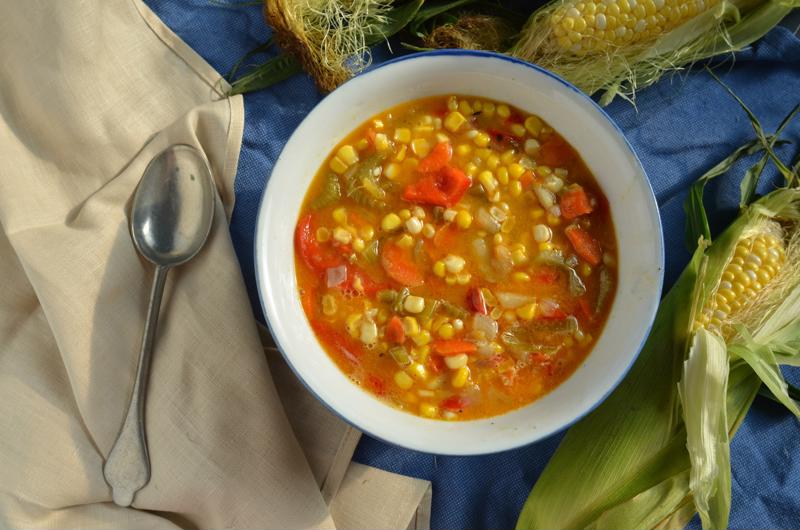There’s no wrong time of year to eat a rich, tasty chowder, but there is a best time: fall and winter. As the temperatures outside start to drop in most parts of the U.S., the demand for warm soups goes up, and none more than chowder. While traditional chowders have deep cultural ties to the American Northeast, this thick, creamy, chunky, and hearty soup is a coast-to-coast fall favorite. For culinary school students interested in adding some fall-inspired foods to their cooking repertoire and their menus, chowders represent the perfect starting point.
What makes a chowder a chowder?
The majority of people have heard of clam chowder, particularly New England clam chowder, but a chowder doesn’t need to have clams. In fact, the word “chowder” is believed to come from the French word “chaudière” which means cauldron, or stew pot, according to Chowhound.
The defining feature of a traditional chowder is its combination of creaminess and chunkiness. It’s important for a traditional chowder to have both these elements. A soup that is creamy but also unmistakably smooth is a bisque, not a chowder. Conversely, a very chunky but watery soup is just a chunky soup in the eyes of a chowder purist. This brings up an important point: In recent years, the term “chowder” has been used more liberally, and is often associated with hearty soups that aren’t necessarily as viscous as the traditional chowder. Chowder purists live and die by the belief that if it’s not chunky and it’s not creamy, then it’s not a chowder. Nevertheless, the “neo-chowder,” if you will, is primarily distinguished by its heartiness.
 Not all chowders are thick and creamy anymore, but they’re still hearty.
Not all chowders are thick and creamy anymore, but they’re still hearty.Clam chowder: The classic
Clam chowder is a time-tested favorite, especially in northern coastal areas like New England and the Pacific Northwest. Most clam chowders are made with a type of hard-shell clams called quahogs, which are endemic to the North American Atlantic coast. The classic New England–style clam chowder is made from chopped quahog clams, tender potatoes and onions that are stewed in a heavy cream base. This is what comes to mind for most people when they think about the quintessential clam chowder.
But even within the Northeast, there’s a divide in chowder preferences. Manhattan-style clam chowder, for example, uses a thinner tomato soup base as well as seasonings that are more typical of a vegetable soup, like this recipe from Food Network, which includes bay leaf and parsley. Rhode Island–style clam chowder is similarly less creamy, but it uses a clear broth instead of tomato and typically contains bacon bits. Advocates of the Rhode Island–style clam chowder will swear that they get more of the clam flavor than in either the Manhattan or New England alternatives.
Other types of chowders
Clams aren’t the only seafood that have their place in a chowder; some chefs may opt for diced monkfish, scallops, and shrimp. Other chowder aficionados will ditch the seafood altogether. For example, this creamy Mexican corn chowder from Cooking Classy incorporates corn, black beans and shredded chicken into a thick, cheesy and, if you so desire, spicy broth.
Another option is to ditch the meat and dairy altogether for a healthier vegan alternative. One recipe from Where You Get Your Protein replaces milk with a non-dairy substitute such as almond or soy milk, and incorporates flour for extra viscosity. With tender potatoes, diced carrots, corn, onion, and a careful array of seasonings, this is one hearty chowder that will surely satisfy this fall season.
Remember, a good chowder should always be hearty enough to leave you with that warm, full, and cozy fall feeling.


